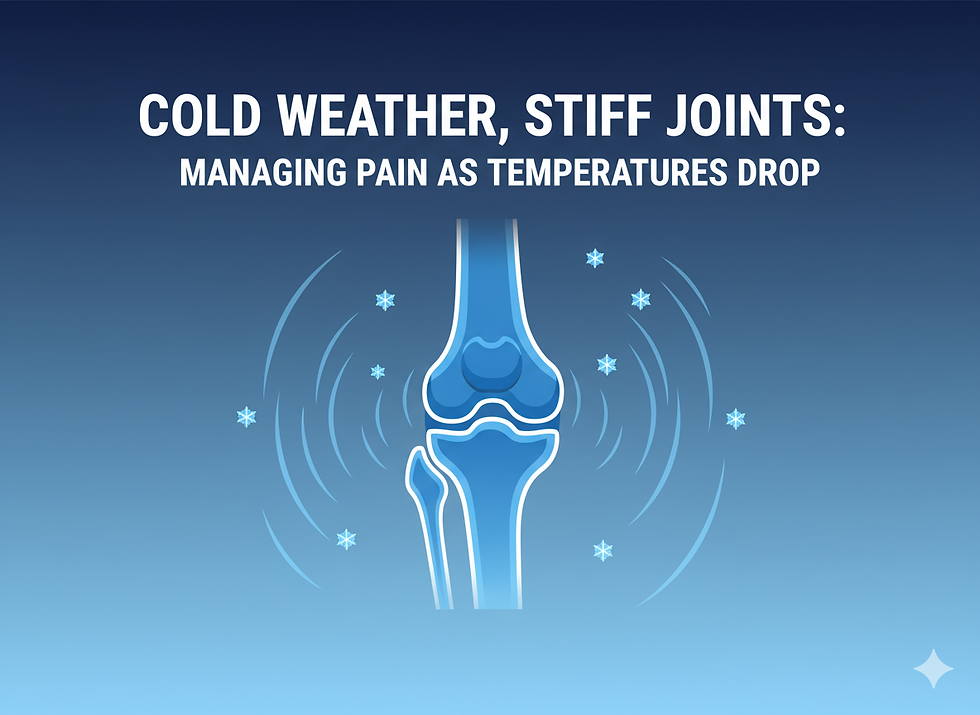Pain Science – What is Central Sensitization?
- K-Town Physio

- Mar 23, 2023
- 3 min read
Pain is how our brain warns us of actual or potential injury or damage. We feel pain as a protective mechanism. But sometimes, pain can persist long after a tissue injury has actually fully healed. The more we study pain science, the more we know that persistent pain is very complex.

Pain is a central nervous system perception. This means your brain perceives all pain. It’s also an emotional experience. Even though all pain is 100% real, our brain does not always perceive information correctly, and therefore the pain experience may not always be an accurate reflection of what is actually going on in our body. Our nervous system can become “sensitized” or over-protective, setting off the alarm bells of pain when it should not. This is called “central sensitization.”
Ever heard of “phantom limb pain”? It is when someone who has had a body part amputated, but still feels pain where their limb used to be even after it’s no longer there! Their brain is perceiving something it used to feel. That pain experience is real, but it is not accurate.
Another example of how our brain can perceive inaccurately is the “placebo” effect. We can be given a pill that we think is medicine, but is in fact a sugar pill, and still feel better. This is because we believe we are getting the medication that will help us feel better. When we think we will get better, our symptoms might actually improve. Our brain can be tricked! The same goes for the opposite. It’s called the “nocebo” effect. When someone is told or believes that they won’t get better, they might be less likely to get better, perpetuating the cycle of pain.
Fear can be a significant barrier to overcoming persistent pain. The more you anticipate feeling pain, the more likely it is to affect you. That can cause kinesiophobia, meaning fear of movement, which can get you further stuck in the cycle of persistent pain. It can also lead to catastrophizing, which is when you assume the worst-case scenario; or rumination, which is when all you focus on is the pain. Stress can cause pain to worsen too. Our thoughts, emotions, and beliefs have a strong effect on our pain experience.
So how can we change our pain experience? How can we desensitize an over-protective nervous system to break the viscous cycle of persistent pain? Learning and understanding the many complex things that may be contributing to your pain, and trying to change the way you think can change your pain experience. Understanding more about pain science can help to reduce fear. Getting proper nutrition, hydration and sleep can help to optimize your general health and well-being. Reducing stress through mindfulness, exercise, spending time in nature can all help to desensitize an overprotective nervous system too. Remember that all pain does not equal injury.
How can Physiotherapy help? A Physiotherapist can help you overcome persistent pain by teaching you movements and exercises that feel good and get you moving again safely. We can help you to identify what might be keeping you stuck in the cycle of pain. We can help you to improve your understanding of the pain experience, helping you to determine which pain signals are over-protective ones and which are accurate ones. We can help you set specific, measurable, attainable, relevant, and time-based goals to facilitate you on the path to improving or managing persistent pain. We can encourage you, modify and progress safe exercises to improve your function. The journey to breaking the cycle of pain is not linear. There will be good days and bad days. But with the proper guidance, you can get back to living the life you want. Remember that “motion is lotion!”
Take “The Pain Truth Test” from https://www.aptei.ca/ to quiz your understanding of pain!
Brittany Church,
Registered Physiotherapist



